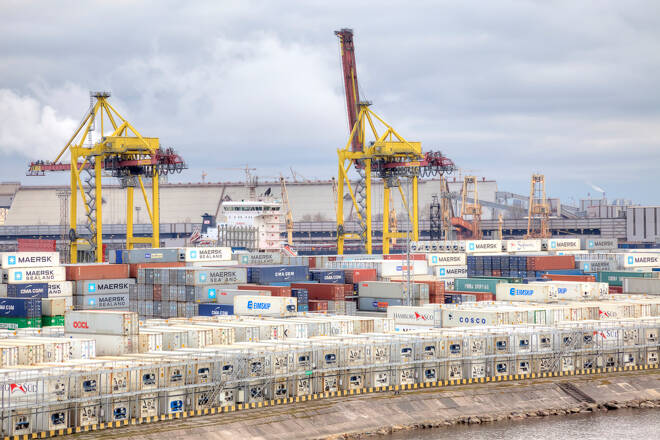Advertisement
Advertisement
German Industrial Production Spikes on Motor Vehicle Production
By:
German industrial production figures impressed this morning, with a 2 increase beating forecasts of a 0.1% rise. Next up, US jobless claims.
It is a relatively quiet day on the European economic calendar. German industrial production figures will draw interest early in the session. Following the sharp increase in factory orders, investors needed a bullish number to ease recessionary fears.
German industrial production increased by 2.0% in February versus a forecasted 0.1% rise. In January, industrial production jumped by 3.7%.
According to Destatis,
- Production in industry excluding energy and construction rose by 2.4% month-on-month.
- The production of capital goods rose by 3.4%, with the production of intermediate goods up by 1.8%. Consumer goods production increased by 1.4%.
- Energy production fell by 1.1%.
- Total production of motor vehicles and parts surged by 7.6%.
- Year-over-year, production increased by 0.6%.
Non-survey-based February numbers from Germany continued to impress. Notably, the numbers contrast the survey-based manufacturing PMI, which reflected contractions in the German manufacturing sector during Q1.
EUR/USD Reaction to German Industrial Production Numbers
Ahead of the production numbers, the EUR/USD rose to an early high of $1.09106 before falling to a pre-stat low of $1.08845.
However, in response to the stats, the EUR/USD slipped to a post-stat low of $1.08934 before rising to a high of $1.08992.
This morning, the EUR/USD was down 0.08% to $1.08987.
Next Up
There are no other euro area economic indicators to influence. However, investors should consider ECB member speeches, with the economic calendar on the light side. No Executive Board members are on the calendar to speak, leaving chatter with the media to influence.
On Wednesday, ECB Chief Economist discussed inflation, reportedly saying,
“I look at food, where inflation pressure is probably its most intense. And it’s still rising now. I don’t think we are yet at the peak of food inflation, it’s not yet there, but again it’s projected to fall this year.”
According to prelim figures, food, alcohol, & tobacco saw the highest annual rate at 15.4% versus 15.0% in February.
Looking ahead to the US session, it is a quiet day on the US economic calendar. Weekly jobless claims figures will draw interest. Following the disappointing JOLTs job openings and ADP nonfarm employment change numbers, a larger-than-expected rise in jobless claims would pressure the EUR/USD on US recessionary fears.
Investors should also monitor Fed chatter on monetary policy and the US economy.
About the Author
Bob Masonauthor
With over 28 years of experience in the financial industry, Bob has worked with various global rating agencies and multinational banks. Currently he is covering currencies, commodities, alternative asset classes and global equities, focusing mostly on European and Asian markets.
Did you find this article useful?
Latest news and analysis
Advertisement
